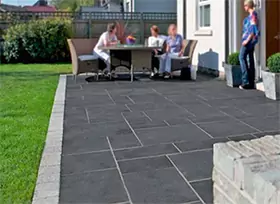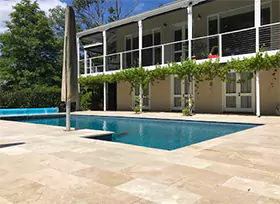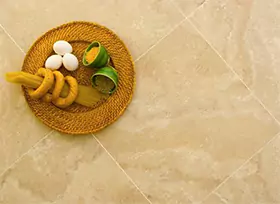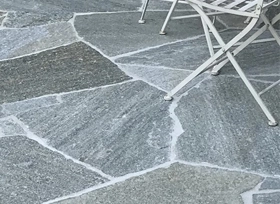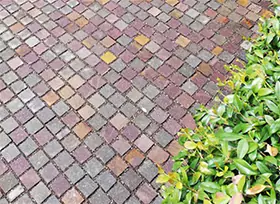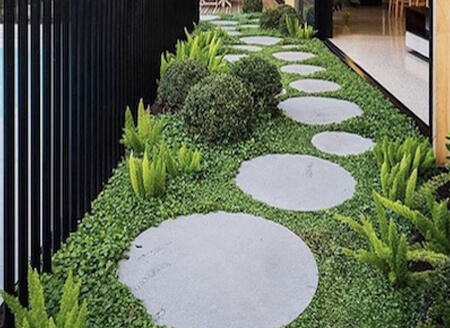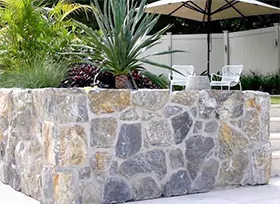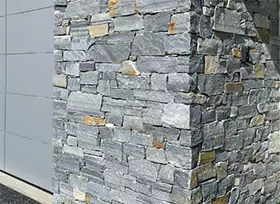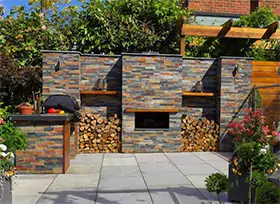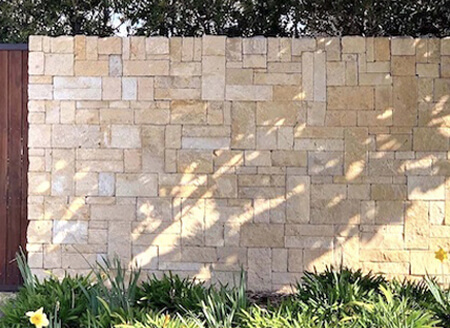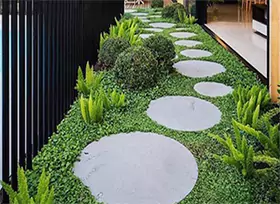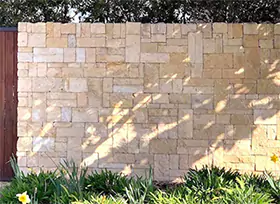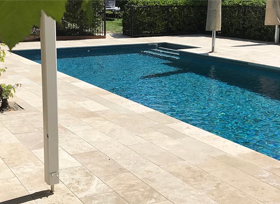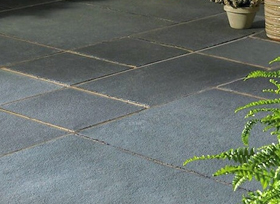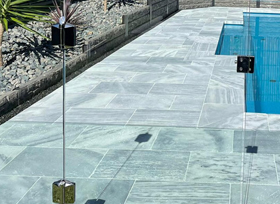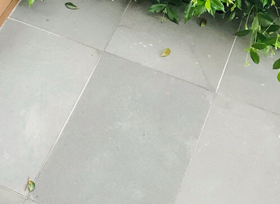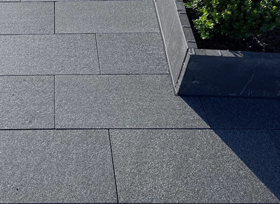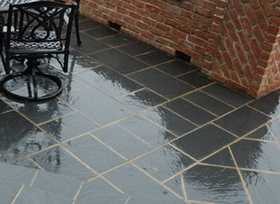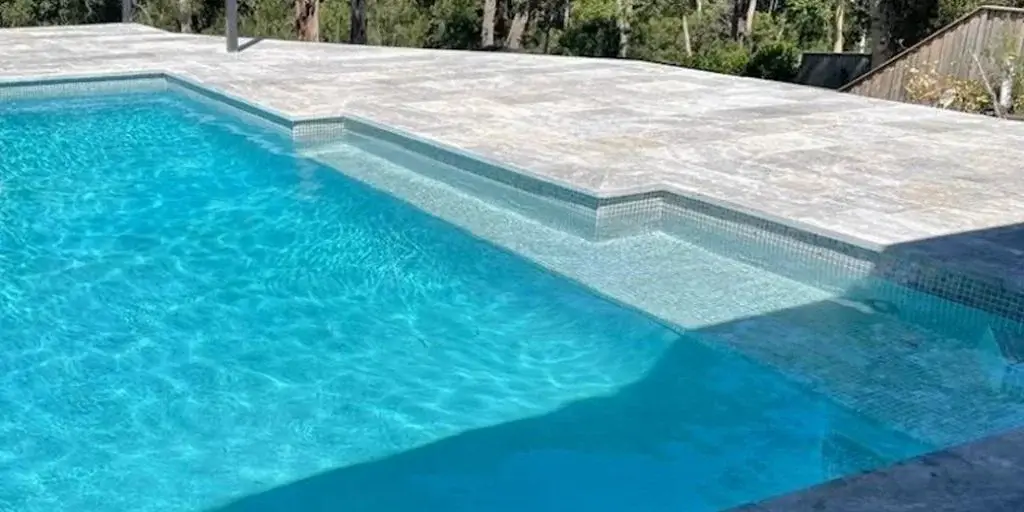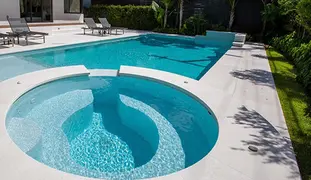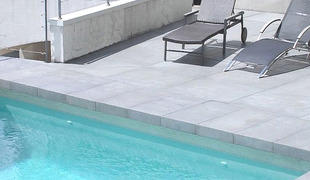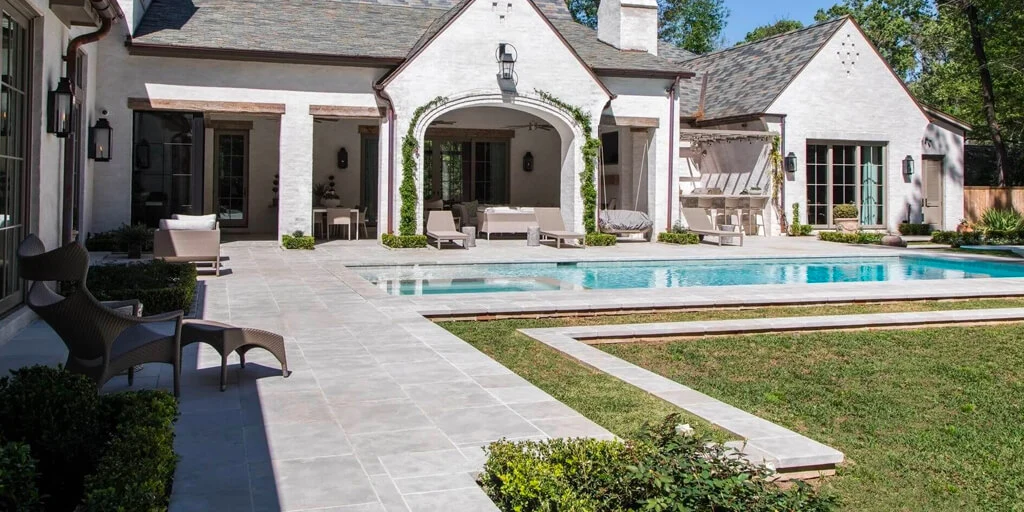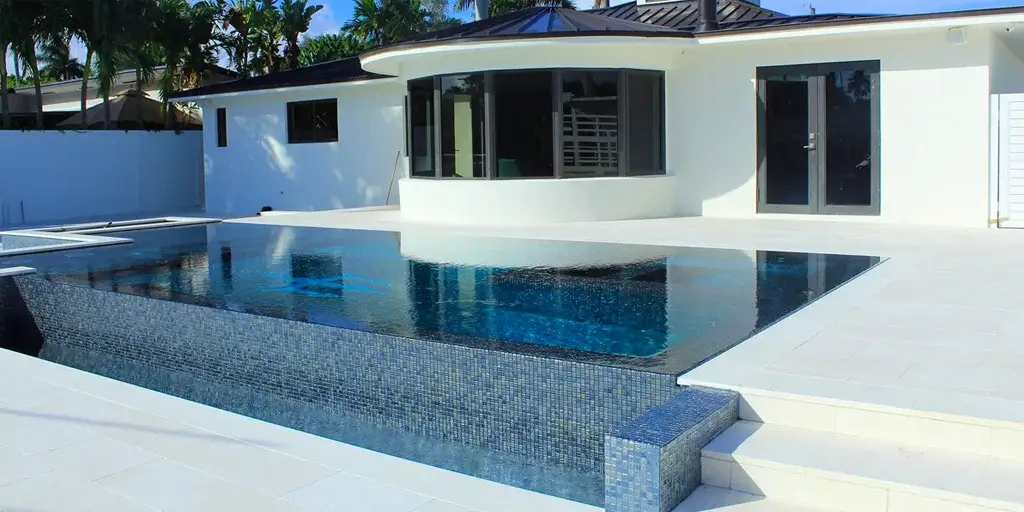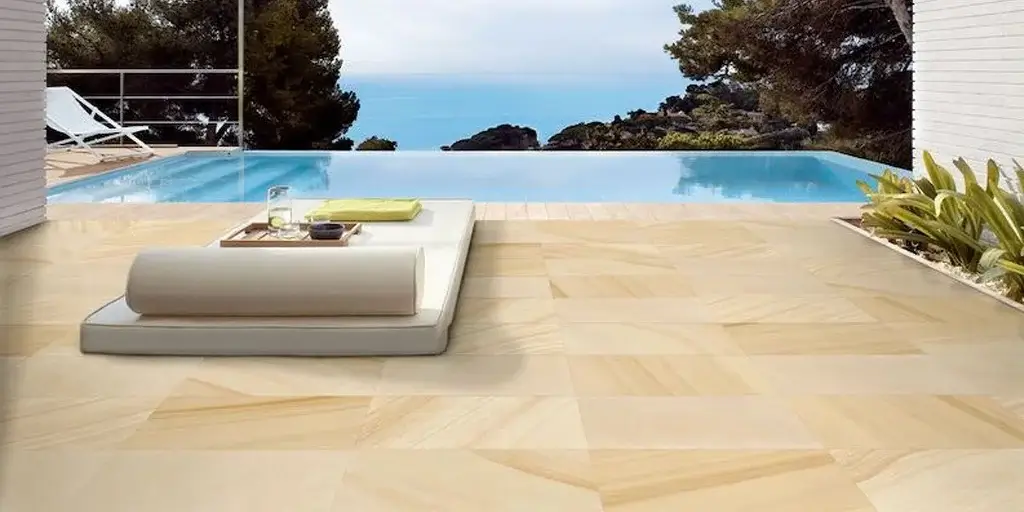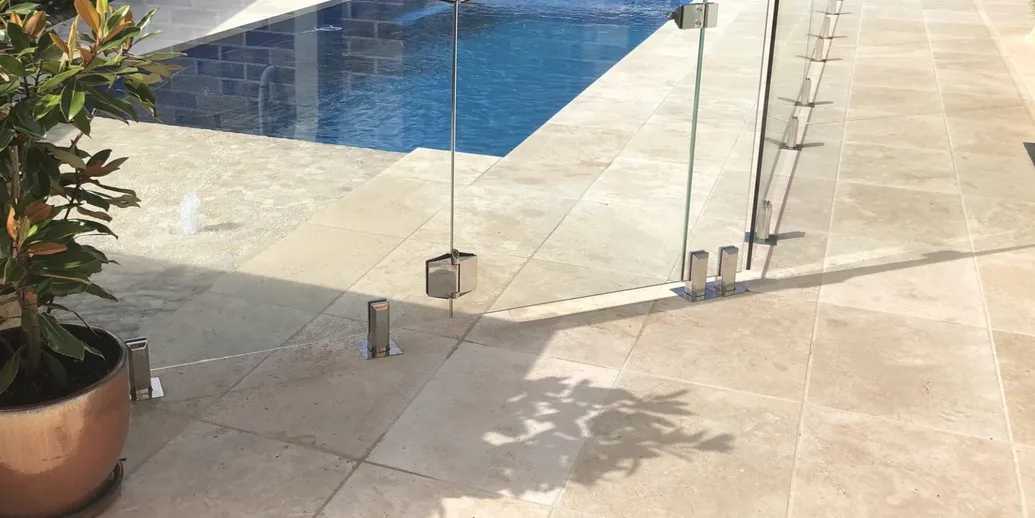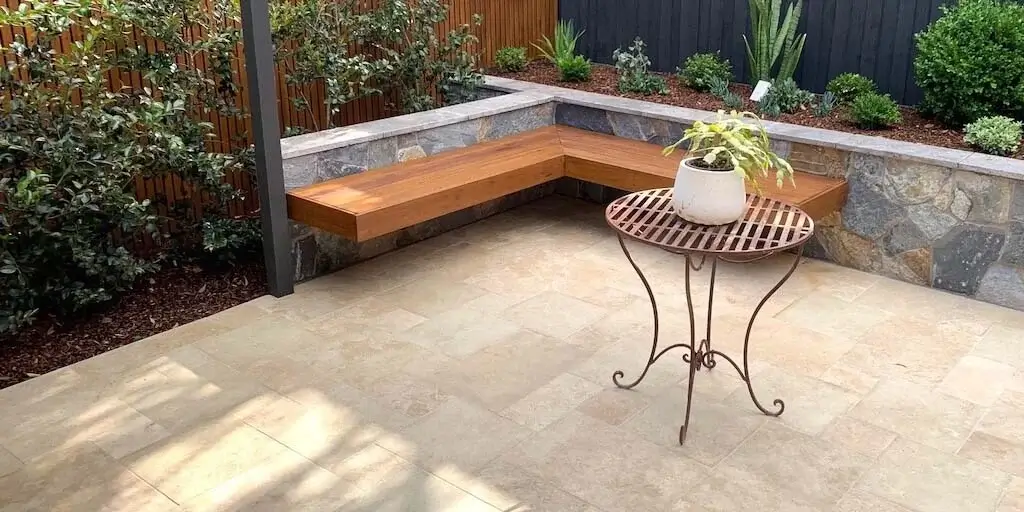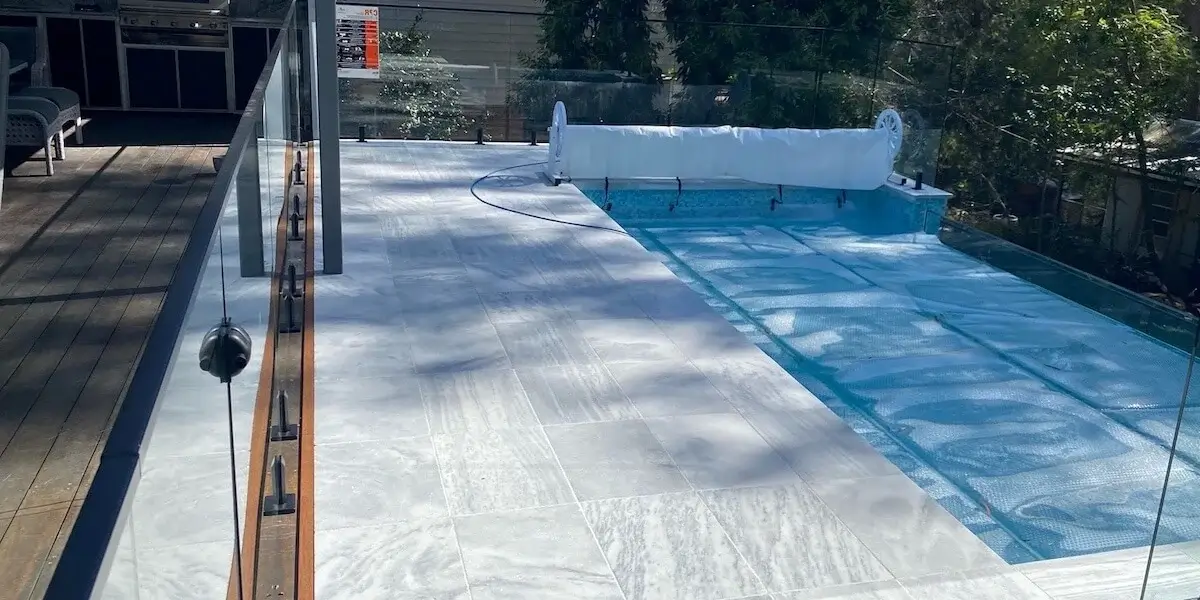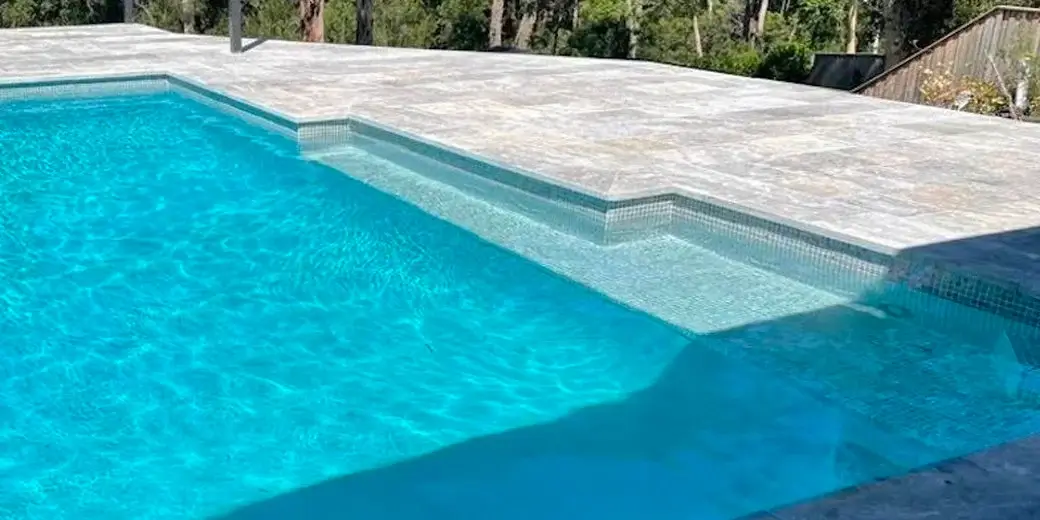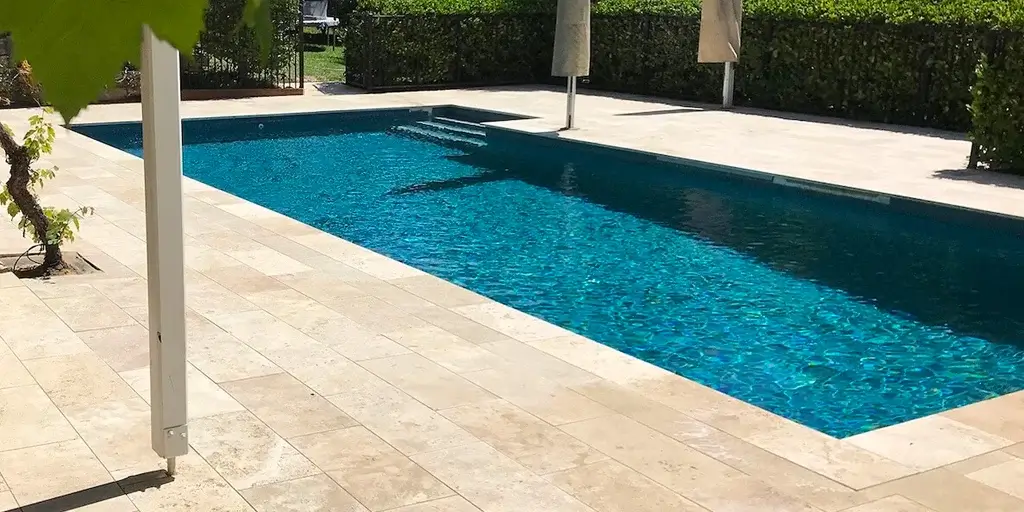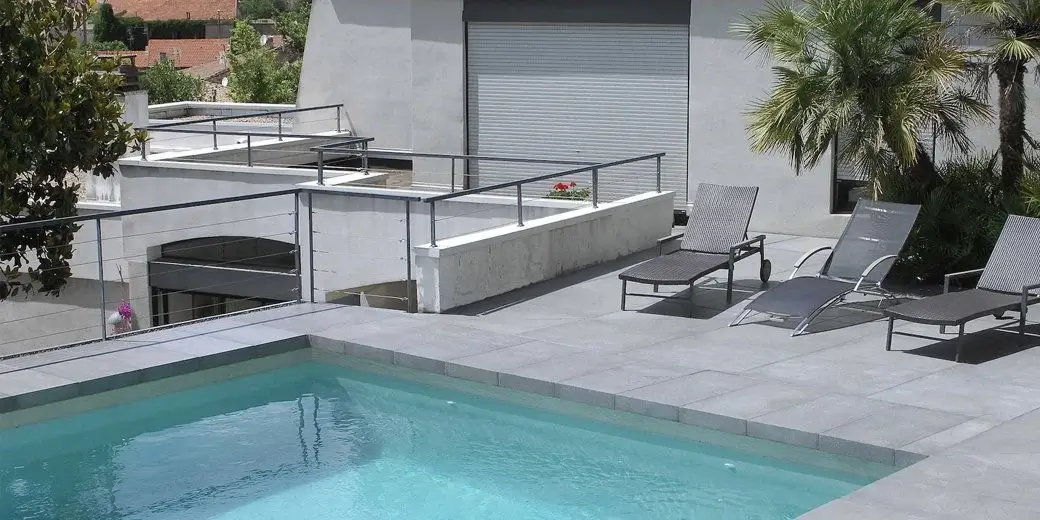Picture your lovely pool area, where you can relax and spend countless hours soaking up the sun. If you have natural stone pool pavers, you know how they can turn the area into a gorgeous haven. Natural stone pool pavers are alluring and entice people to use them inside and outside space. The stones’ pristine beauty is both inspirational and intriguing. However, these stones may develop wear and tear with time.
Our hearts likewise break when we notice a significant fracture in pool pavers or copings. When spills permanently damage the pool paving, it negatively affects our attitude throughout the party. It’s time for a restoration when your stone pavers appear worn, cracked or discoloured. We’ll take you step-by-step through the procedure in this blog. Let’s examine the path of renewing your natural stone pool pavers, whether you’re a homeowner trying to spruce up your outdoor space or just curious about the procedure.
What Kinds of Damage Can Natural Stone Suffer From?
Stains: Water, rust and oil can all create stains that are impossible to remove. While it happens less frequently outdoors, some foods and cleaning acids can discolour natural stone pool pavers. While deposits in the liquid that accumulate over time cause water stains, metallic objects (such as nails, bolts, cans and metal furniture) are the main cause of rust stains.
Hit Marks: These white stains, sometimes known as stun marks, appear when a sudden, sharp impact occurs on natural stone pool pavers. In essence, it creates weak linkages in the rock that burst, causing it to fracture. Depending on the force of the impact, hit marks may only be visible at the pool paver’s surface or may penetrate the entire slab.
Extreme Temperature Damage: Thermal shock from high temperatures can shatter pool tiles and pavers. When water from melting snow gets trapped in joints or cracks and freezes again, natural stone pool pavers can also chip or break. This is dependent on the stone’s porosity and capacity to absorb water.
Etching: Etching happens when an acidic solution dissolves and consumes the pool pavers or coping tiles surface, leaving a dull mark. In minor cases, it appears as a clear liquid stain, but the damage worsens the longer the stone is exposed to chemicals. Polishing is the best and only effective method for removing these stains.
Scratch Marks: Dirt, sand and other abrasive particles lodged under shoes during foot traffic can harm pool pavers or coping tiles. Usually, this happens when objects that are harder than stone rub against them. For instance, dragging bulky pool furniture across stone paving can leave unattractive markings that detract from the natural appearance of the stones.
Cracks: Cracks can be prevented by careful handling during installation and smart design thinking, provided that the pol pavers are of good grade before laying. In addition to dramatic weather changes, bad jointing or inadequate paving encroaching beneath the stone can all be blamed for cracking.
Hazing: A white, chalky substance known as efflorescence may occur on the surface of pool pavers. This happens when rain and groundwater dissolve salts in both soil and water. The salt is left behind when the moisture evaporates. Although it is normal and won’t harm the stone, it must be washed away.
What is Stone Restoration?
There are various phases involved in the repair of natural stone pool pavers. The procedures and methods change depending on the damage, the types of pool pavers or coping tiles and the areas where the stones are installed. However, we’ve outlined this excellent stone restoration approach’s most typical or anticipated procedures.
Damage assessment before natural stone restoration: Yes, a precise diagnosis is necessary. Otherwise, you risk receiving subpar care and incurring excessive costs.
Preparation for natural stone restoration: Furniture, items and tapes on fragile elements like window or door glasses around treatment areas must be removed to perform grinding, chemical spray and other treatments. On the advice of experts, stop using treated surfaces both during processing and after.
Natural stone grinding in the restoration process: Most machine grinders with diamond fittings come in various sizes and are used for grinding. All kinds of uneven surfaces are flattened during the Lippage (Uneven Tile Edges) Removal process.
Grinding removes all types of ledges, roughness, scratches and deep stains from surfaces. Hand grinders are used for vertical surfaces like walls and worktops in locations where heavy floor grinders cannot be used.
Natural stone honing restoration process: The honing restoration process of pool pavers is less forceful than grinding. Thus, it further smoothed the surfaces of the pool pavers or coping tiles. It is an optional step that might not always be necessary if the required outcomes are obtained during the grinding process. If stains, scratches and other defects were not entirely removed during grinding, it restores some gloss to stone surfaces.
Natural stone polishing restoration process: Compared to honing, the method employs industrial diamonds of lower grade. Pool pavers or coping tiles are made glossy or polished, giving their former beauty through polishing. You can use various stone treatments to make the pool pavers non-slip, glossy or rustic with a classic appearance. To bring matching finishes to nearby stone pieces, many tools are available.
Natural stone grout filling in restoration process: However, it is imperative to remove the grout and replace it before beginning to apply sealant solutions. For a seamless look and smooth surfaces that match the level of the pool pavers on both sides, grout fillers are paste- or mortar-like granules used to fill the spaces between stone edges. Grout fillers are available in various shades and colours for high-quality goods and can provide the desired textures.
Natural stone sealing or coating in restoration process: Sealing refers to being impregnated with a particular sort of sealer rather than being covered in wax, epoxy or other chemical layers. Do you know that nearly every type of stone, Travertine pool pavers or pool mosaic tiles, has built-in pores or holes that allow the stone to breathe? A stone’s mass passes air and water vapour to avoid excess wetness and cold heat-like extremities from the top to beneath surfaces. If you coat or cover the stone’s surfaces and prevent the pores from working, the stone will eventually lose its essential qualities. Therefore, topical sealants are not advised for pool paver coating, and only chemicals that have been impregnated are suitable to provide resistance against stains made of oil and water.
Care after stone restoration: Usually, after the restoration process is finished, the pool pavers and coping tiles are sealed and given a set amount of time—usually 12 to 24 hours—to heal. This means you can’t use that space. Additionally, you should be cautious of animals, birds and outsiders during this time to prevent accidental incursions and damages, especially for outdoor applications.
You must now adhere to the dos and don’ts your contractor or engineer has provided for cleaning the repaired area. Avoid using strong or acidic chemicals on previously damaged pool pavers; consult your builder or stone supplier for the best local advice.
Follow-up maintenance measures: It’s not always possible to regularly clean expansive natural stone surfaces. To get rid of accumulated contaminants, they need to undergo periodic general cleaning. Accessible stone surfaces like pathways, steps, fountains, etc., should be routinely swept and washed with water to keep trash-free.
To eliminate moss or algae, flush clean water and a moderate bleach solution over outdoor pool and patio areas. Always consult experts to determine which is best. Standard maintenance should also involve routinely checking stone surfaces for structural flaws, movement, degradation or staining and arranging routine sealing if required.
The Bottom Line
Giving your outdoor sanctuary new life by restoring your natural stone pool pavers. As we’ve seen, the procedure calls for thorough evaluation, skilled craftsmanship, and attention to detail to restore the lustre and charm of your poolside haven.
At Stone Depot, we recognise the value of these excellent finishing touches that give your outdoor area a unique feel. We provide a wide selection of pool pavers to accommodate different design tastes. We have the ideal natural stone pavers to accentuate your pool area, whether you’re searching for traditional elegance, contemporary simplicity or something in between.
Therefore, remember that Stone Depot is here to supply not just the products you require but also the experience and direction to ensure that your outdoor space stays a lovely, inviting hideaway for years to come as you set out on the path of restoring your natural stone pool pavers. Let’s move one stone at a time towards realising your dreams.
*Disclaimer: All information and advice given above in the blog are to the best of our knowledge. Please reconfirm at your end before execution.


